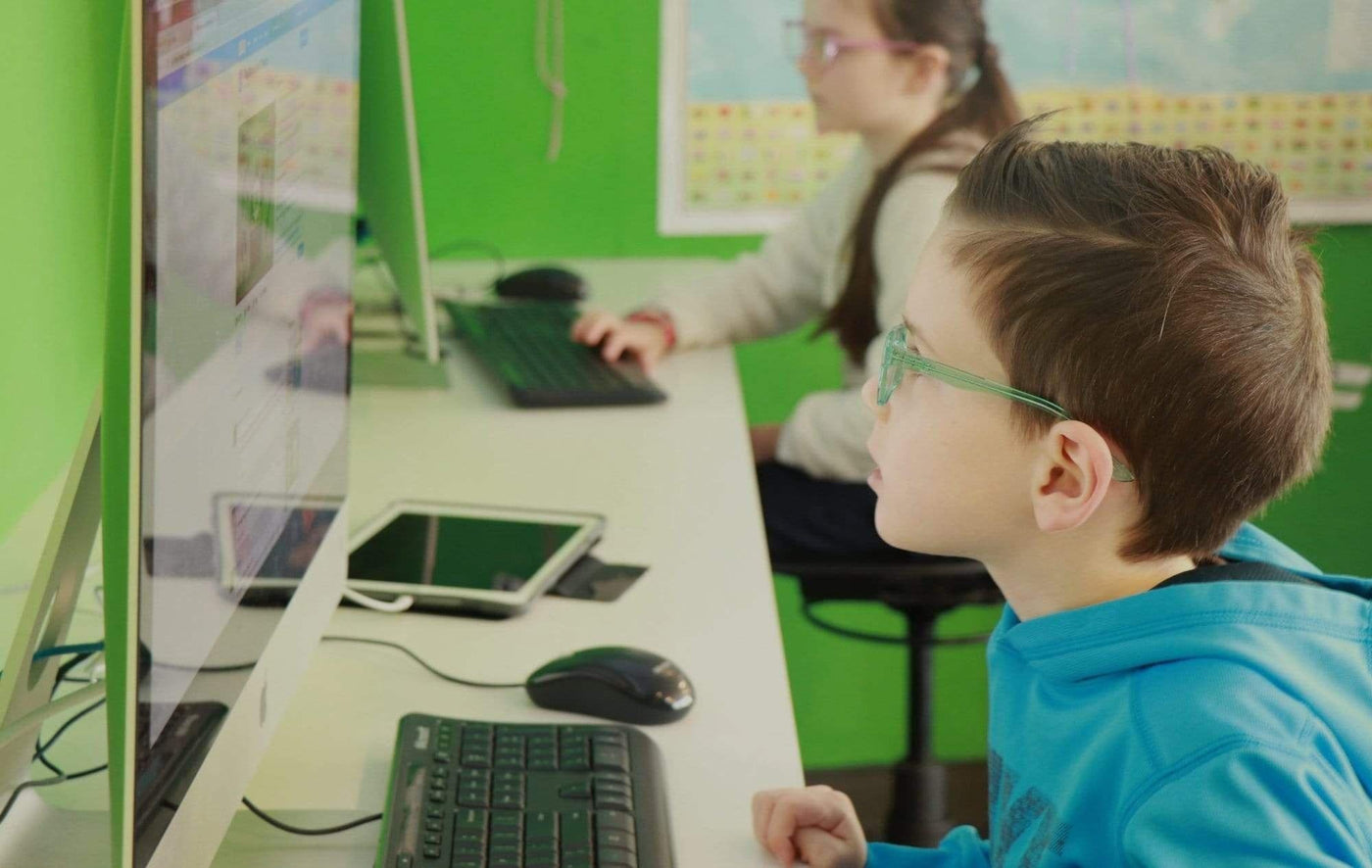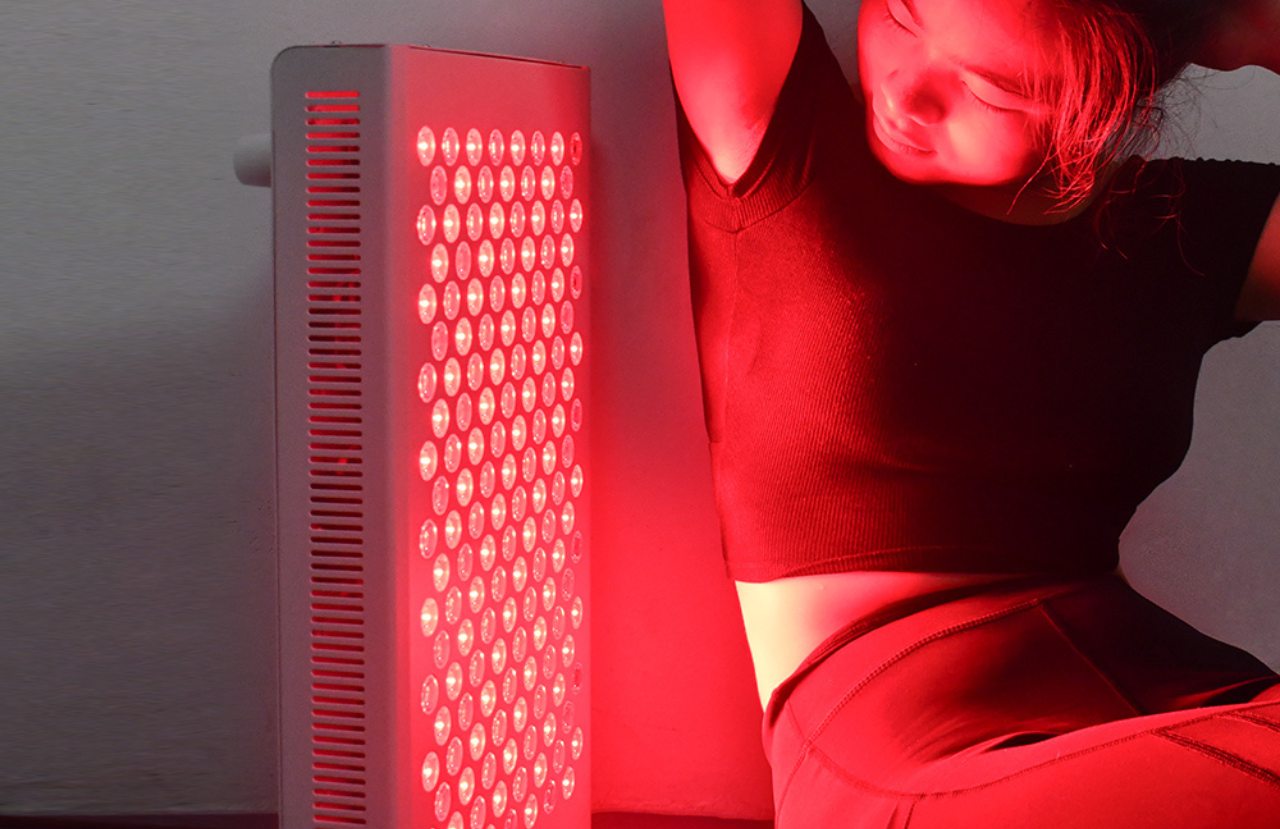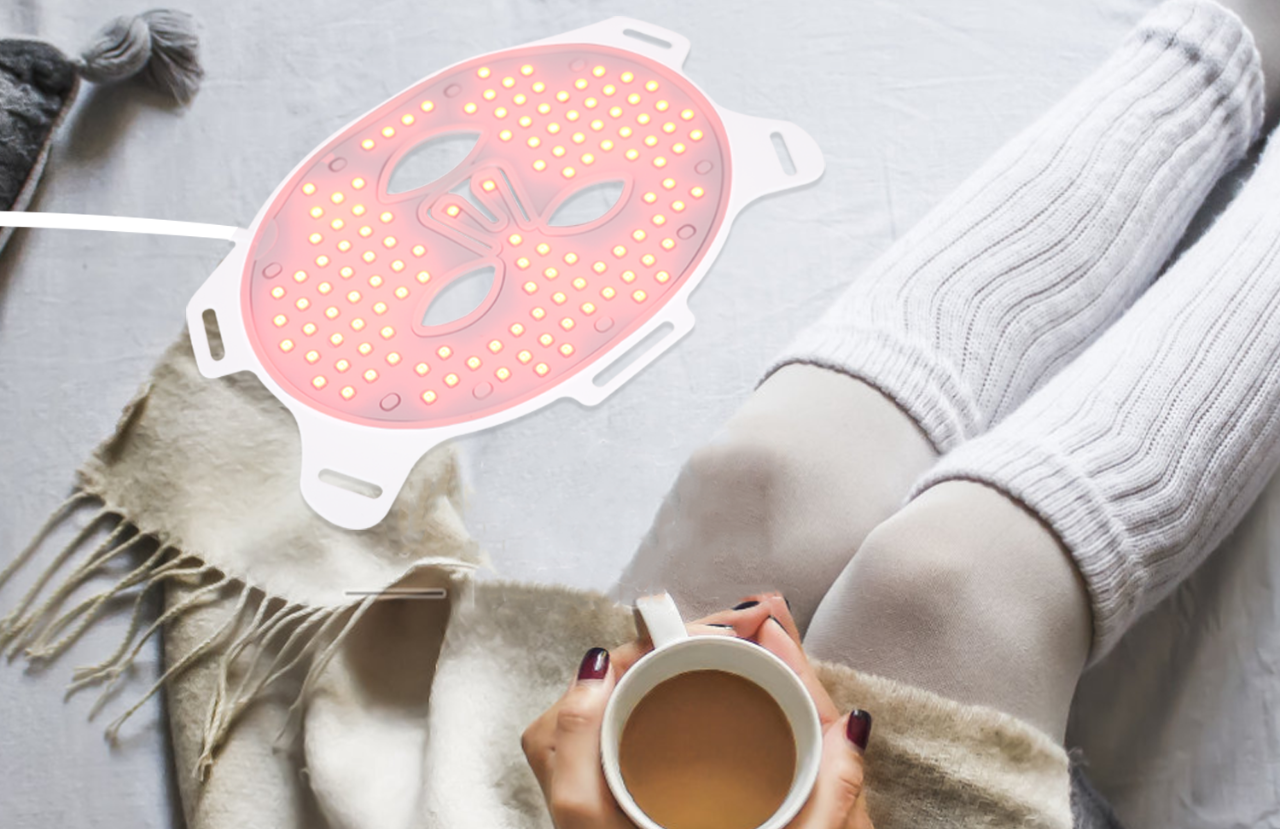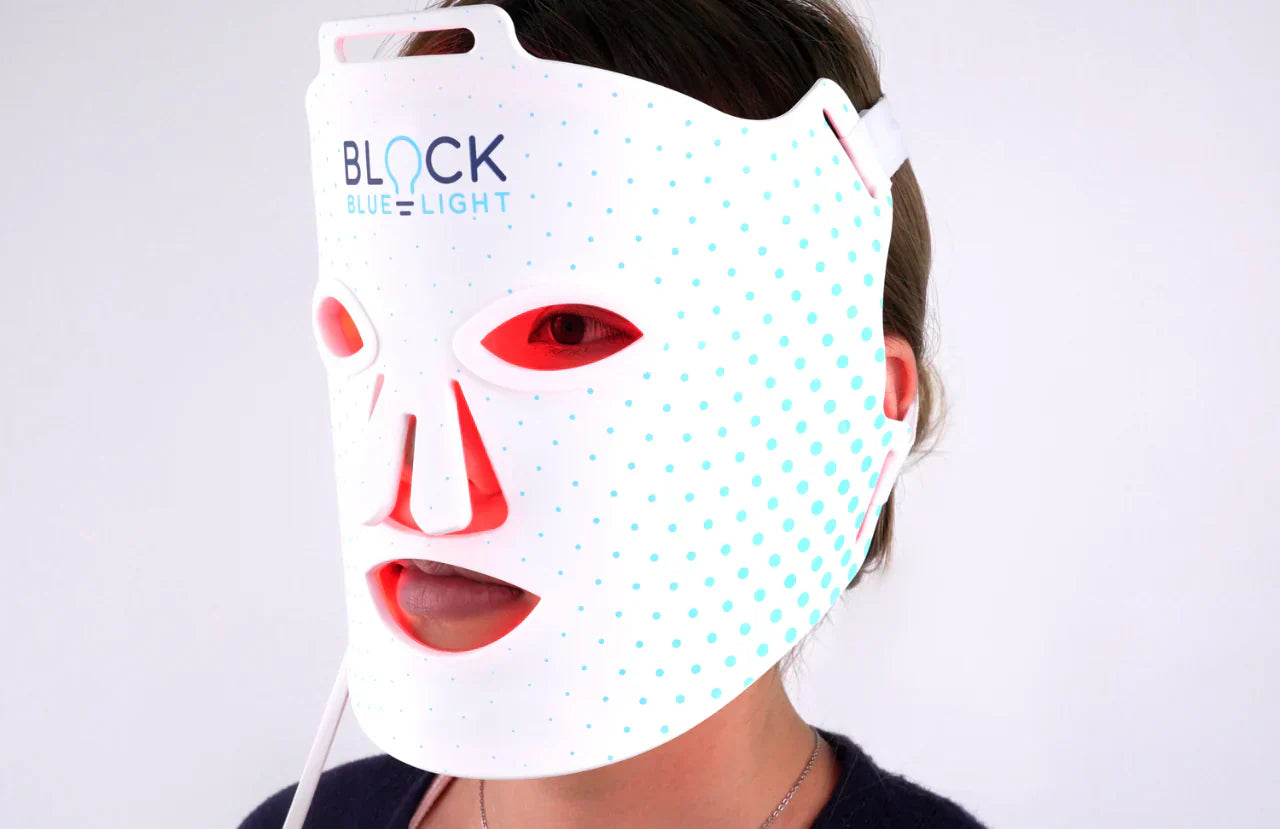Generations of children are growing up in an illuminated world. They have constant access to screens. TVs, laptops, tablets, smartphones, gaming devices and e-readers − you name it they have it.
There are educational benefits and other opportunities that come along with being a tech-savvy child that older generations just didn't have. Unfortunately, it also means that their young eyes and brains are being consistently bombarded with artificial, high-energy blue light.
Bright blue light is a natural part of the visible light spectrum and is necessary for regulating our circadian rhythm − the sleep-wake cycle. However, the level of artificial blue light exposure that we now experience from birth until old age is simply unprecedented, and our bodies are paying the price.
Chronic artificial blue light exposure has been shown to have far-reaching consequences to health, and children may be especially at risk.
Common Sources of Blue Light for Children

Children are so adept at using technology − and mesmerized by it − that it often seems like an extension of their body.
So, just how much blue light are children being exposed to?
According to the 2015 “Growing Up in Australia” study, TVs made up for about 60% of children’s screen viewing, with 45% of twelve to thirteen-year-olds having a TV in their bedroom (1).
In 2017, the Australian Child Health Poll discovered some more shocking stats (2). It found that a third of preschool children, two-thirds of primary school children, and almost all teenagers owned their own smartphone or tablet.
Teenagers were found to spend the most time in front of a screen – television, computer, laptop, gaming device, smartphone or tablet – than any other age group. They averaged almost 44 hours per week, which translates to 6 hours or more per day!
Children aged six to twelve averaged 32 hours per week in front of a screen. Two to five-year-olds had 26 hours of weekly screen time, and infants and toddlers averaged 14 hours.
Additionally, 85% of parents of children aged six and younger admitted to using screens to keep their children occupied.
We can reliably assume that, in 2019, these worrying statistics have risen! Digital devices have become much more accessible and apps like Snapchat, Instagram, Facebook and Twitter are being targeted at children.
Aside from excessive screen use, children are learning in classrooms and living in homes with energy-efficient bright LED light bulbs. And many children use LED night lights from a young age.
Children Are More at Risk from Blue Light

Children's eyes are much more sensitive to blue light because, until the age of 14-15, their eyes are not yet fully developed. The crystalline lens of the eye — the flexible lens behind the iris that allows us to focus — is more transparent in children (3). Children also have larger pupils. So, their eyes are completely unprotected and taking in higher levels of potent, high-energy blue light waves.
On top of this, we know children, tweens and teens are more likely to use digital devices and have more time to spend in front of screens.
Couple all that with their changing and developing brain and circadian rhythm - it's a recipe for disaster.
Health Effects of Blue Light on Children
There is increasing research to confirm that this constant artificial blue light exposure is having a negative impact on our children's health.
Let's have a look at 5 key areas of their health that are being affected.
Sleep

Constant overexposure to blue light, especially at night, confuses the brain and disrupts our natural body clock.
As the natural light fades in the evening, the brain is signalled to produce a hormone called melatonin to prepare us to fall asleep and stay asleep through the night. Unfortunately, exposure to high levels of this potent blue light at night from artificial sources suppresses the production of melatonin and sends a signal to the brain to stay awake.
Your child is exposed to screens and artificial light sources all day and well into the evening, and their brain doesn't know what time it is!
Children are especially sensitive to the melatonin-suppressing effects of this light. One study showed that the melatonin levels of children were suppressed twice as much as adults when exposed to the same level of light (4). Prepubescent children have also been found to be more sensitive to melatonin suppression when compared to older children (5).
In 2015, a review looked at 36 studies on the relationship between sleep and the use of digital devices among children and adolescents. It found that those who used digital media devices experienced a delay in bedtime and less total sleep time (6). In fact, sleep deprivation amongst teenagers has been on the rise since 2012, around the same time that smartphones and other portable screens became must-have items.
It's not just screen use at night that disrupts sleep. Research on Norwegian teenagers found that screen time during the day as well as at bedtime had a negative effect on sleep (7).
This is worrying because sleep is particularly important during childhood and adolescence due to the rapid growth and development that occurs. They simply aren't going to get the recommended hours of sleep for optimal growth and development if the vital sleep hormone is being suppressed from birth. Not to mention that babies and toddlers are still developing healthy night time sleeping patterns.
Learning Problems

We've seen how blue light exposure at night can influence children's melatonin production and ruin their sleep. Poor sleep quality and sleep deprivation have pretty shocking consequences in many areas. It's linked to reduced learning capacity and poor academic performance (8). Needless to say, poor sleep and exhaustion are a disaster for your child's ability to thrive at school.
However, it goes beyond disrupted sleep. Exposure to high levels of blue light could be causing changes in your child's brain.
Children who spend more than two hours using screens — like smartphones, tablets, and gaming devices — have been shown to score lower on thinking and language tests (9). Research has also shown that preschool-age children who spend more than two hours per day in front of screens are at an almost eight times greater risk for attention deficit and hyperactivity disorder (10).
Mental Health
Depression, anxiety and suicide rates among children and adolescents have been on the rise over the last 10 years, which coincides with increased exposure to light at night and the skyrocketing use of blue light-emitting screens (11). If your child is irritable, unable to cope with emotions and lacks enthusiasm and motivation – too much artificial blue light may be to blame.
High levels of blue light exposure could be affecting mental health in children by messing with the body's natural rhythms and stimulating the brain.
Blue light exposure at night has a significant negative impact on children’s sleeping habits, and poor sleep is associated with changes in mood. Just think about how your child's behaviour and mental state changes when they’re exhausted!
Plenty of studies have found an association between smartphone use after bed time with lack of sleep, poor mental health and suicidal behaviour in teenagers (12, 13).
Research on adults found that when exposed to dim blue light at night (about 5 lux) the risk for developing depression was significantly higher when compared to people who slept in a dark room devoid of blue light (14). We've seen how much more sensitive children and teenagers are to the effects of blue light, so it's safe to assume the risk for depression may be even greater in young people.
Eye health

Does your child struggle with sore and tired eyes, headaches and blurry vision? If so, bright lights and screen time may be to blame.
Blue light can penetrate deep into the eye, reaching the retina, which makes high levels of blue light exposure a major risk to eye health.
Blue light from screens scatters easily, which puts huge stress on the eyes as they work to keep re-focusing. According to anecdotal and scientific evidence, excess screen time leads to eye-strain in children (15). This includes burning, sore and tired eyes, headaches, blurred vision and trouble focusing.
Studies have also shown that frequent screen time, a lack of natural light exposure and the use of fluorescent desk lamps are all linked to increasing rates of myopia — near-sightedness — amongst children (16, 17).
Weight Gain
The rates of weight gain and obesity in children are on the rise. This is concerning because not only can being overweight affect their confidence, it's also a precursor to chronic health issues like diabetes.
Could artificial blue light from screens and LEDs be part of the problem?
There is a proven link between higher Body Mass Index (BMI) in children and more screen time from TV viewing (18).
And it's not just screens. A 2016 study on children of preschool age found that higher artificial light exposure from their environment contributed to an increased BMI (19).
Additionally, poor sleep and shorter sleep times during childhood — which we know is a result of chronic blue light exposure — have been associated with a significantly higher BMI in adulthood (20).
This suggests that the consequences of artificial light exposure could be causing unhealthy weight gain in children that continues into adulthood. The mechanisms behind this are not 100% clear yet, but we know that higher blue light exposure and screen time is associated with poor sleep, fatigue and less physical activity.
How to Reduce Your Children's Blue Light Exposure
Blue light isn't all bad. It's important that your kids are exposed to natural blue light from the sun each day. This will sync their body clock and improve mental focus and mood.
However, they need to be protected from artificial blue light exposure as much as possible.
Reducing your child's exposure to blue light — especially for screen time — can be a challenge. Luckily, we have blue light blocking products specially designed for children that will make the process easier.
Adopt these tips and watch your child’s sleep normalise, and their mental and physical health transform before your eyes!
1. Wear Blue Light Blocking Glasses

Blue light blocking glasses are a must for children! As we've seen, their sensitive eyes and brains need protection from high-energy blue light.
Invest in some blue light blocking computer glasses for kids to use during the day whenever they are in front of a screen. These glasses have special lenses which filter out blue light to reduce eye strain and protect their health. They're designed to fit kids and are super trendy, so your child won't feel self-conscious wearing them to school or the movies!
If your child is watching TV, playing games or working on the computer after sunset, they need extra help. They need maximum protection, which is why we offer red-tinted blue blocking glasses designed especially for children. These glasses ensure that no blue light can infiltrate their eyes to suppress melatonin and disrupt sleep.
2. Change Your Home Lighting
The bright white LED lights in your home are a major source of blue light. Even if your child's eyes are protected from the light, there are still receptors on the skin that detect bright light. So, common forms of artificial room lighting will mess up their circadian rhythm, disturb sleep and affect their mental and physical health.
Soft-coloured, sleep enhancing light bulbs can be used to replace regular LED blue light-emitting bulbs. Our light bulbs are guaranteed to be free of blue light and will NOT suppress melatonin levels or harm eye health.
Make sure to put blue light free light bulbs in your child's room, as well as the living room, kitchen and any rooms that they play and do homework in.
These light bulbs will not only eliminate blue light exposure but also give your home a lovely warm atmosphere while still providing plenty of illumination.
3. Keep the Bedroom Free of Blue Light


All sources of artificial blue light need to be removed from your child's bedroom so they can produce optimal melatonin and get good sleep quality.
The first step is to ensure there are no screens in their room at night, including TVs, smartphones, tablets, iPods, laptops, desktop computers and gaming devices.
Next up, LED alarm clocks and any devices with charging lights need to go. Set up a central charging location in the home where devices can be charged away from the bedroom.
Now all the main culprits are removed, you will want to replace all the standard light bulbs with our Sweet Dreams Light Bulbs, these give you a warm amber glow and are the equivalent of the 40-60 watt bulb. For the bedside lamps we recommend installing our Twilight Bedtime Bulbs which are a dimmer 20 watt equivalent bulb
Many young children aren't comfortable sleeping in total darkness, and that's understandable. However, turning on a hallway light, keeping the curtains open or using a blue light-emitting night light is the worst thing to do.
Instead, use a red night light. They offer a simple and effective way to eliminate blue light and ensure they get the best quality sleep. And the warm glow of the red light is comforting!
You can also give your child a red light torch to keep beside their bed to use when they get up and go to the toilet in the night.
Finally, install block out curtains in their room to eliminate any blue light coming from street lights, cars and other sources.
4. Restrict Screen Time

It’s not easy drawing a line when it comes to your child’s use of screens. However, overwhelming research shows it must be done for the sake of their health and wellbeing.
Set screen time limits during the day and use a timer to keep track. You may want to make a deal with your kids that they can "earn" a certain amount of screen time by doing chores. Another tip is to create areas in the house or specific times of day when no one in the house uses screens.
The most important thing for children, when it comes to screen time, is a digital curfew. Make sure all screens are off two hours before bed time and devices are removed from their room so that they can produce optimal melatonin.
Encourage your child to spend as much time as possible outdoors during the day away from screens, exposed to natural blue light waves. This will boost their overall energy, alertness and mood.
5. Re-think Your Own Habits
The 2017 Australian Child Health Poll found a strong link between the parents’ screen time and that of their children. So, if you’re spending lots of time watching TV, working on your computer and interacting with your smartphone, your kid is going to mirror this.
Take stock of your daily screen use and give yourself a screen time limit and digital curfew. Wear Blue Light Glasses when you’re in front of a screen. Create screen-free weekends and holidays for the whole family to show your children that there is more to life!
Final Thoughts
As you can see from this article, our children's chronic blue light exposure from screens, home light and environmental lighting have reached unhealthy levels.
By following the steps outlined here and minimizing their blue light exposure, you’ll soon notice huge improvements in your child’s sleep, school performance, mood and energy!
For more information and to purchase blue light blocking glasses and night lights for your child, visit www.blockbluelight.co.nz
Resources
1. Children’s screen time. Growing up in Australia: The longitudinal study of Australian children, 2015 Report. (2015). Available at: https://aifs.gov.au/publications/childrens-screen-time
2. Screen time: What’s happening in our homes? (2017). Available at: https://www.rchpoll.org.au/polls/screen-time-whats-happening-in-our-homes/
3. Turner & Mainster. (2008). Circadian photoreception: ageing and the eye's important role in systemic health. Available at: https://www.ncbi.nlm.nih.gov/pmc/articles/PMC2582340/
4. Higuchi et al. (2014). Influence of light at night on melatonin suppression in children. Available at: https://www.ncbi.nlm.nih.gov/pubmed/24840814
5. Crowley et al. (2015). Increased sensitivity of the circadian system to light in early/mid-puberty. Available at: https://www.ncbi.nlm.nih.gov/pubmed/26301944/
6. Hale et al. (2015). Screen time and sleep among school-aged children and adolescents: a systematic literature review. Available at: https://www.ncbi.nlm.nih.gov/pubmed/25193149/
7. Hysing et al. (2015). Sleep and use of electronic devices in adolescence: results from a large population-based study. Available at: https://www.ncbi.nlm.nih.gov/pubmed/25643702
8. Curcio et al. (2006). Sleep loss, learning capacity and academic performance. Available at: https://www.ncbi.nlm.nih.gov/pubmed/16564189/
9. Is screen time altering the brains of children? (2018). Available at: https://www.healthline.com/health-news/how-does-screen-time-affect-kids-brains
10. Tamana et al. (2019). Screen-time is associated with inattention problems in preschoolers: Results from the CHILD birth cohort study. Available at: https://www.ncbi.nlm.nih.gov/pubmed/30995220
11. Twenge et al. (2017). Increases in depressive symptoms, suicide-related outcomes, and suicide rates among U.S. adolescents after 2010 and links to increased new media screen time. Available at: https://journals.sagepub.com/doi/full/10.1177/2167702617723376
12. Oshima et al. (2012). The suicidal feelings, self-injury, and mobile phone use after lights out in adolescents. Available at: https://www.ncbi.nlm.nih.gov/pubmed/22728900
13. Stiglic & Viner. (2019). Effects of screen time on the health and well-being of children and adolescents: a systematic review of reviews. Available at: https://www.ncbi.nlm.nih.gov/pmc/articles/PMC6326346/
14. Obayashi et al. (2018). Bedroom light exposure at night and the incidence of depressive symptoms: A longitudinal study of the HEIJO-KYO cohort. Available at: https://www.ncbi.nlm.nih.gov/pubmed/28992236
15. Rechichi et al. (2017). Video game vision syndrome: A new clinical picture in children? Available at: https://www.ncbi.nlm.nih.gov/pubmed/28850642
16. He at al. (2015). Effect of time spent outdoors at school on the development of myopia among children in China: A randomized clinical trial. Available at: https://www.ncbi.nlm.nih.gov/pubmed/26372583
17. Li et al. (2015). Near work related parameters and myopia in Chinese children: the Anyang childhood eye study. Available at: https://www.ncbi.nlm.nih.gov/pmc/articles/PMC4526691
18. Wen et al. (2014). Correlates of body mass index and overweight and obesity of children aged 2 years: findings from the healthy beginnings trial. Available at: https://www.ncbi.nlm.nih.gov/pubmed/24415528
19. Pattinson et al. (2016). Environmental light exposure Is associated with increased body mass in children. Available at: https://journals.plos.org/plosone/article?id=10.1371/journal.pone.0143578
20. Landhuis et al. (2008). Childhood sleep time and long-term risk for obesity: a 32-year prospective birth cohort study. Available at: https://www.ncbi.nlm.nih.gov/pubmed/18977973/





